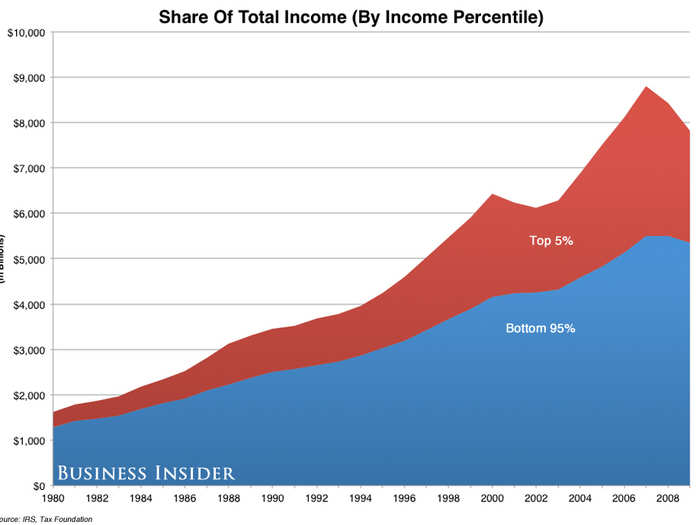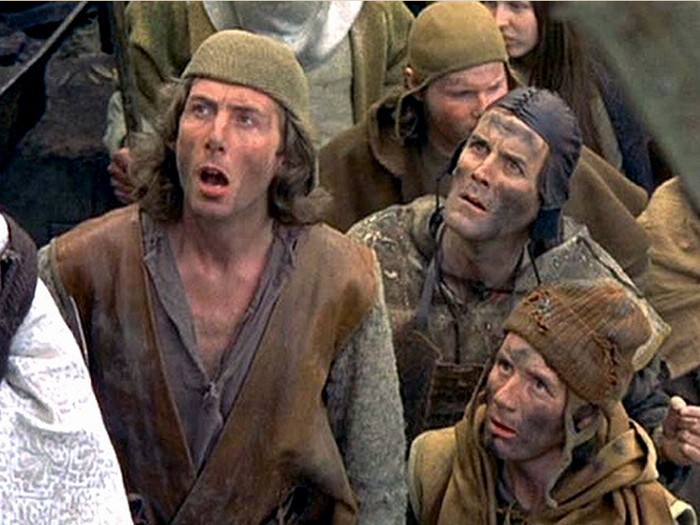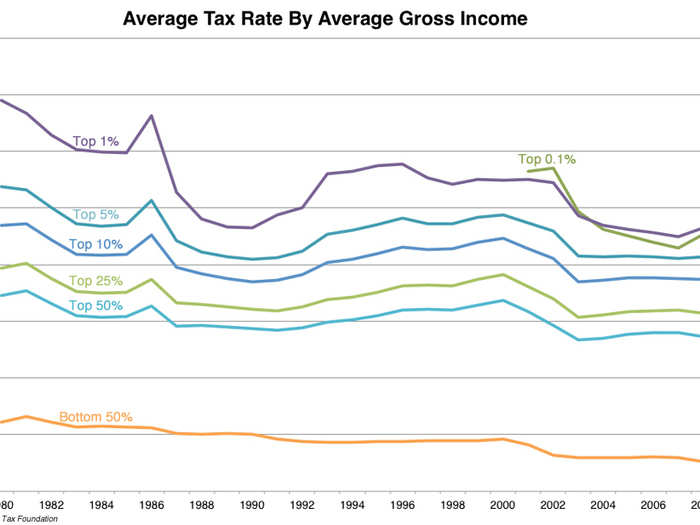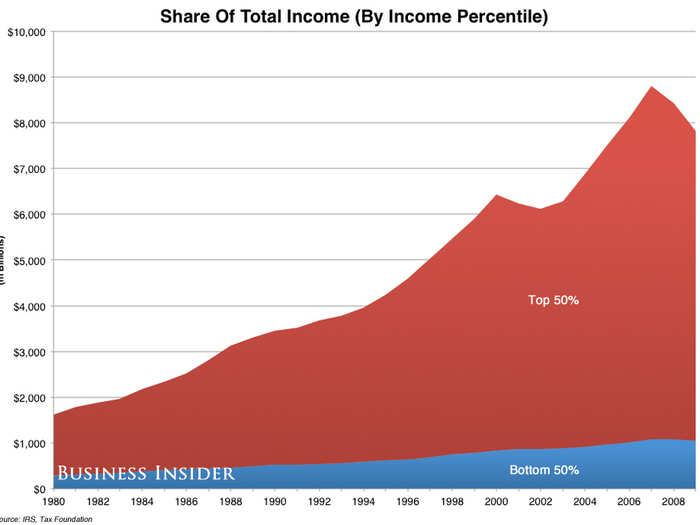Here's Who Makes The Money In This Country - And Who Pays The Taxes
Let's start with incomes...

In aggregate, American taxpayers made just under $8 trillion in 2009.

The top 1% made more than $350,000 apiece. The top 5% made more than $150,000. The top 10% made more than $110,000. The bottom 50% — half of the country's wage earners — made less than $30,000.

Now let's look at how that income distribution breaks down. Not surprisingly, the top 50% make the vast majority of all the money in this country. And look how that percentage has changed over the last 30 years!

The top 25% make about three-quarters of the money.

The top 10% make about half of the money.

The top 5% make about a quarter of the money.

The top 1% make a nice chunk of the money (which has grown significantly over the years).

And the top 0.1% — a few hundred thousand Americans — do startlingly well.

On a percent-of-the-whole basis, the income distribution looks pretty even — until you remember that the top 5 bands are all in the top half. The blue band is the bottom half.

So that's income. Before we go to taxes, let's look at how this income distribution has changed over a longer period. Here's a chart of US income growth for the last 90-odd years through 2008. Over the whole period, the income growth was relatively widely distributed (pie chart).

Over the first ~60 years of that period, in fact, the bottom 90% of earners actually captured most of the income growth (blue in the pie chart).

But in the past three decades, all that changed. In the past 30 years, the bottom 90% (blue) have captured only a tiny percentage of the income gains. The top 10% — and especially the top 1% (pink) — captured most of it.

And then look at what happened in the decade through 2008: The top 10% captured ALL of the income gains. The incomes of the bottom 90%, meanwhile, SHRANK.

Why are the top earners running off with so much of the money? Many reasons, from globalization to tax policy to an increasing corporate obsession with profit — instead of the other forms of value that great companies create.

Right now, for example, corporate profits are at an all time high.

Corporate wages, meanwhile, are at an all-time low. Our big companies are sharing very little of their wealth with the people who generate it.

Adjusted for inflation, the "average hourly earnings" in this country haven't grown in 50 years.

The explosion of senior executive and shareholder pay, meanwhile, has sent the earnings of the richest Americans going through the roof. The average big-company CEO makes about 300-times as much as the average rank-and-file employee.

This income disparity is turning us into a nation of overlords and serfs. And that's actually bad for all of us, even the overlords. Because consumers (average employees) spend most of the money in this country, and serfs can't afford to buy much stuff. That's why our economy is growing so slowly.

But, anyway, now let's look at who pays taxes. Here, importantly, we will be looking at only one kind of taxes: FEDERAL INCOME taxes. There are many other kinds of taxes, so don't start going off about "freeloading."

The top 50% of income-earners pay almost all of the federal income taxes in this country. This share has increased modestly over the past 30 years.

The top 25% pay about 80%.

The top 10% pay about 70%.

The top 5% pay more than half of the income taxes.

And the top 1% pay more than 30% of the income taxes — a percentage that has been steadily growing over time. (You can see why the top 1% complains about having to shoulder so much much of the tax burden. But, then, they're also making an ever-larger share of the income.)

Here are the respective income percentiles in a single chart. Note how little the bottom half pay (blue). Note how much more as a percentage of the whole the top 5% are paying.

Finally, let's look at those income and tax percentiles together. The bottom 50% of income earners in this country — those who make less than $30,000 a year — make about 13% of the total income and pay 2% of federal income taxes.

The top 50%, meanwhile, make almost all of the income and pay almost all of the income taxes.

The top 25% of income-earners, who make more than ~$60,000 per year, make two-thirds of the national income and pay 87% of the income tax.

The top 10% of earners, who bring home a minimum of ~$110,000 per year, make 43% of the income and pay 70% of the income tax.

The top 5% of earners, who make more than $150,000 a year, make a third of the income and pay almost 60% of the income tax.

And the top 1%, who make more than $350,000 a year, make about ~17% of the income and pay 37% of the tax.

And how about the top 0.1%? They make 8% of the income and pay 17% of the tax.

The 0.1%, by the way, make more than $1.5 million apiece.

The bottom 50% collectively make only slightly more than the top 0.1%. But the top 0.1% do pay more taxes...

Lastly, how about income tax rates? You guessed it: They're higher (though not high) on the 1% and 0.1%.

So, what's the answer? How can we fix our country? We have to increase the incomes of the lower-middle class and middle class — not necessarily by having the top half make less, but by having the bottom half make more.

One way to do that will be to convince our corporations to pay their employees better. The current corporate obsession with profit is shafting the economy's key constituency — the ~100 million rank-and-file workers who spend most of the money and do most of the work. And their lack of spending money is hurting everyone.

So that's your crash course in incomes and income taxes. Now let's talk about the economy...

Popular Right Now
Popular Keywords
Advertisement